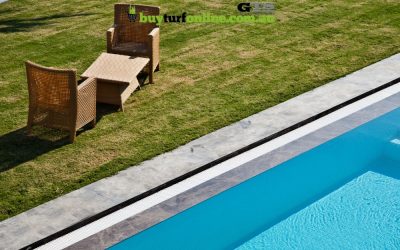How to Edge a Lawn to Give Your Garden the Wow-Factor
Quick Links
How To Edge a Lawn
Have you ever seen a hairdresser paying super attention while working on the edges? If not, next time you visit a salon to get a haircut try observing.
I am not a hairdresser but I can tell you why they pay close attention to edges. It’s the edges that give your overall hairstyle its shape.
Maintaining your lawn is no different than getting a haircut. It doesn’t matter how beautiful your lawn is if you don’t take care of the edges, it won’t give you that “wow” factor.
A well-manicured lawn with perfect height, colour and health can be eye-catching and stand out from the rest. Nevertheless, if you want to level up, you need to learn how to edge a lawn.
Benefits of Edging Your Lawn
Edging not only gives your lawn a distinct look but also offers many other benefits such as weed-free borders and a healthy lawn.
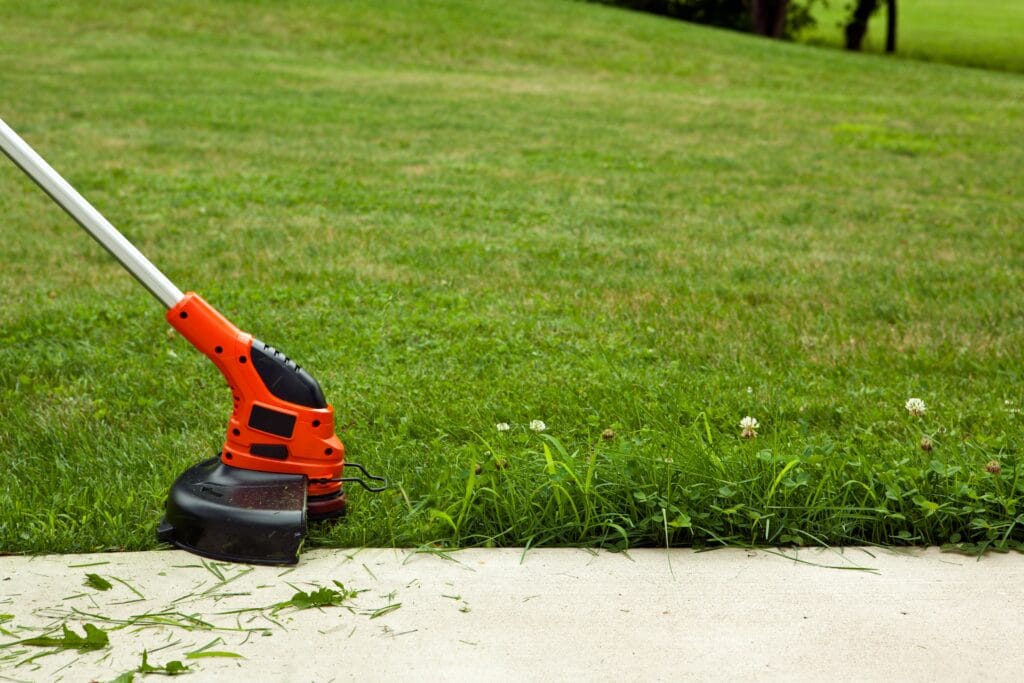
Here are a few benefits of edging your lawn:
- Increases Curb Appeal and Value – Keeping your property top-notch is one of the easiest ways to increase its value. If you’re planning to sell your property, make sure to mow and edge your lawn. It will give potential buyers a good impression.
- Healthy Lawn – The definition of a healthy lawn can differ from person to person. For me, any lawn that is free from weeds and stays intact within the given boundary is healthy. Edging your lawn keeps unwanted weeds at bay and your turfs inside the line of control.
- Act as a Root Barrier – To all the gardeners out there, this one’s for you. A little gap between your lawn and your flower garden will prevent the grass from crawling into garden areas. Why is it important? Turf roots can stop the supply of water and nutrients from the soil to flowering plants.
- Prevents Unwanted Foot Traffic – Lawn edging not only acts as a line of control between your lawn and garden. It also acts as a visual border, especially near walkways for guests visiting your house.
- Easy to Maintain – Maintaining your lawn is not rocket science. However, it may take some time to edge if you’re doing it for the first time. Once you establish the line, it gets really easy to maintain and keep the line visible.
Tools You’ll Need For Building Lawn Edges
The first step to edging your lawn is to gather tools and materials.
Some of the most important ones to have on hand include:
- Edger – This is the primary tool you’ll need for edging your lawn. You can choose between a manual edger, which requires physical effort to use, or a powered edger, which is easier to operate. More on edgers in the next section.
- Shovel – You’ll need a shovel to dig the trench if you’re planning to install a physical barrier.
- String – If you’re creating a curved edge, you may want to use string to mark out the desired shape before you start edging.
It’s important that you choose an appropriate tool as per your lawn size and conditions.
For example, choosing a powered edger for a small lawn could be expensive. For a smaller lawn, a manual edger is all you need.
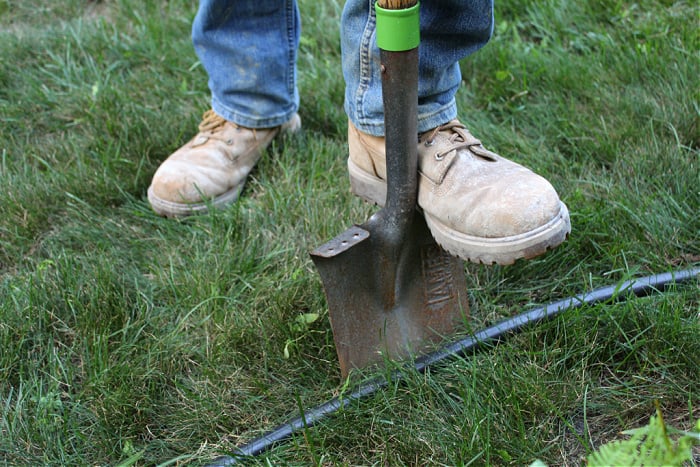
How to Edge a Lawn
There are many ways to edge a lawn, including a manual edging tool, a power edger, or even a simple shovel. The key is to create a clean and straight edge that complements the overall appearance of your lawn.
With a little practice and the right tools, you can easily edge your lawn and give it the perfect finishing touch.
Prepare The Lawn
Walk around the lawn and inspect for any rocks, sticks, or wires that could come in the way of edging tools. Pay attention to lawn edges near the pathways, this is where electrical wires, plumbing pipes, or other buried hazards can be found.
Secondly, use a lawn mower or grass trimmer to cut the grass to a desired height. Trimming gives you an idea of how short or tall to trim your grass along the edge. It also helps you achieve a straight edge line.
Make sure you don’t trim your grass too low. As a rule of thumb, avoid cutting more than a third of your grass blades at a time.
Mark The Lawn Edge
Next, you need to mark out the edges. Unless it’s a straight line marking the edges is crucial. It will give a clear idea of where to make the edging cuts.
Straight lines are easy to mark, you can use string stretched between two sticks or bottles. Most professionals don’t even bother to mark straight lawn edges.
For curved areas, you can use tape, a hose, or a rope. But sometimes tackling curvy edges can be challenging, especially if you’re doing it for the first time.
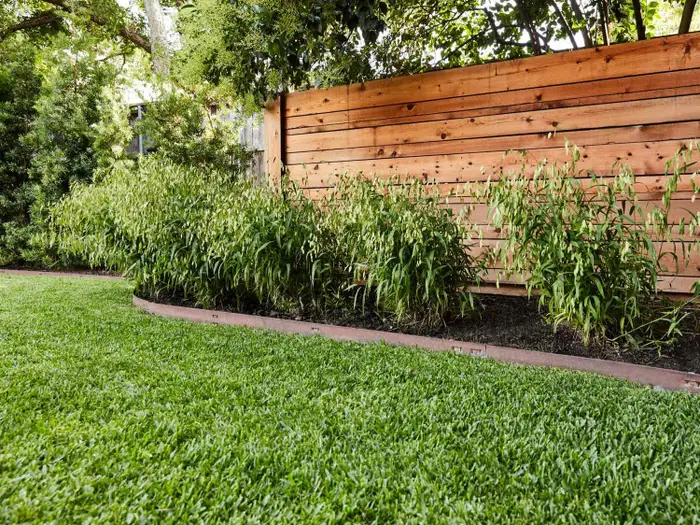
Here’s how you make it easier.
Firstly, lay a hose or rope and then peg it down with tent pegs. The pegs will hold the hose from moving and hold its shape.
Secondly, use a half-moon edger to carefully cut the outside edge of the hose. The cuts will give you a clearly defined edge line.
Wear Safety Gear
As a rule of thumb, you should always wear safety gear while working on your lawn.
Some of the most important gear you should wear include:
- Goggles – Make sure to wear safety glasses, it’s for your own good. It will protect your eyes from rocks, debris and dirt.
- Earplugs – If you’re using a power edger, earplugs are a must-have. It can help reduce the amount of noise that reaches your ears and prevent hearing damage.
- Gloves – Edging a lawn includes handling powerful tools that can cut through grass, small branches and even your skin. Wearing gloves made of a durable material like leather can help prevent injuries and improve your grip on the edger.
- Mask – A power edger can create dust and debris in the air. Inhaling these particles can irritate your lungs and cause respiratory problems, especially if you have allergies or asthma. Wearing a mask prevents inhalation of dust and debris.
Choose An Edging Tool
Choosing the right tool is the most important step because it defines what type of jobs you can complete. Lawn edgers come in two main types, manual and power edgers.
Depending on how big or small your lawn is, you have to choose the right one for you.
Manual Lawn Edger
As the name suggests, manual lawn edgers are simple tools that require manual operation. These tools typically consist of a long handle with a cutting blade at the end.
The user will need to push the edger blade along the edge to create a clean and straight line.
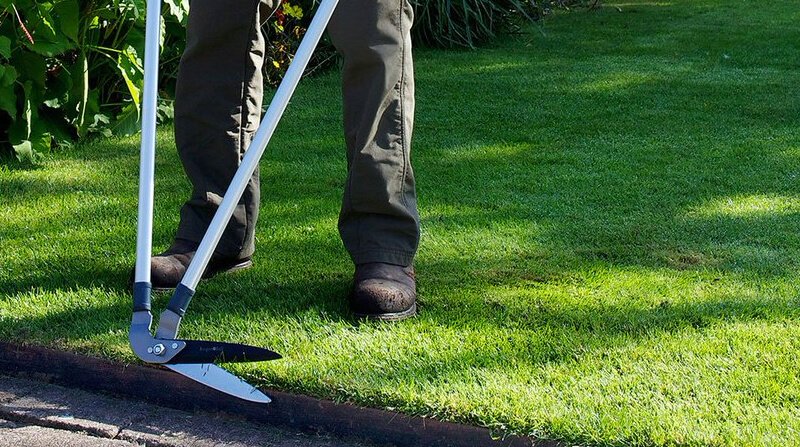
Some of the best examples of manual edgers include half-moon edgers, dual-wheel rotary, landscaping edgers and edging shears. One advantage of manual lawn edgers is that they are affordable, especially the half-moon edging tool.
It’s easy to use and requires no power, making it ideal for small lawns and gardens. The only problem with manual edger is it requires physical effort which can be trying for some users.
They are also slower compared to power edgers and are not suitable for cutting tough soil.
Power Edger
There are more power edgers in the market than manual edgers. A power edger can be an electric trimmer, gas-powered tools or a battery string trimmer.
One common feature you will find in all power edgers is their rotating blades that can cut through the turf and soil to create a neat edge. These machines come in all shapes, sizes and usability.
You can use it handheld or mount it on wheels for easy maneuverability. They are faster, more efficient, and require little physical effort from the user.
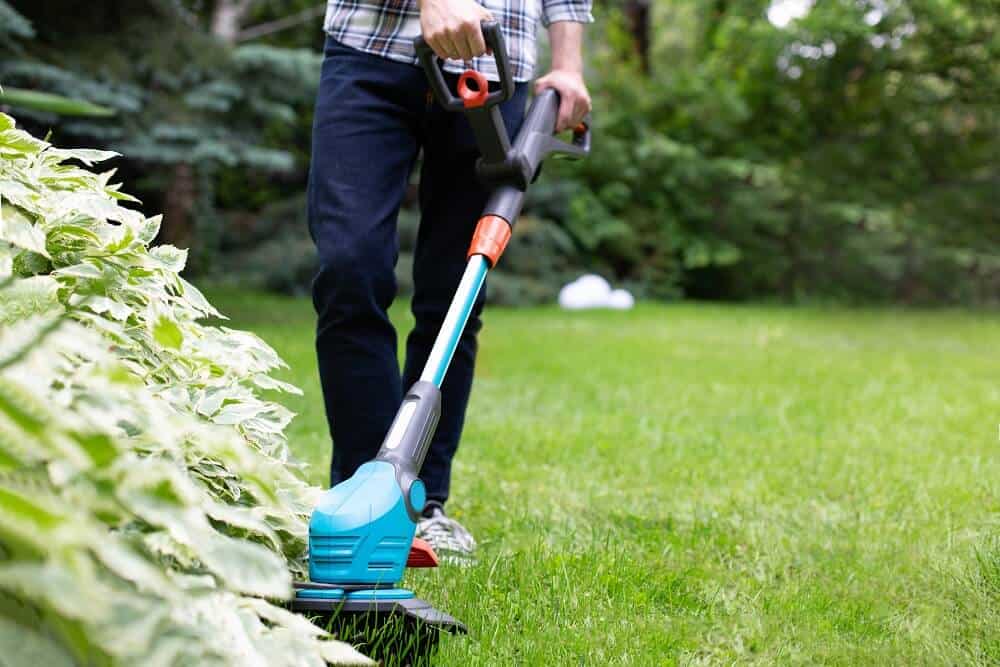
Power edgers are best for people who have large garden beds and lawn areas. You can quickly clean your overgrown edges without breaking a sweat with these machines.
With all the good features it has to offer, power edgers also come with some drawbacks. They are more expensive, louder and heavier than manual edgers.
Start Edging
Now, the edging begins.
If you’re using a half-moon edger place the tool 2 inches in from the edge and dig about 2 inches deep. Rock the edger side-to-side and lift it. You will need to put in some effort at first but once you get used to it, it’s easygoing.
Manual edging is best for curved edges as you can adjust the edger angle as per your need. It gives your full control and is easy to use. It’s as simple as using a shovel.
On the other hand, if you’re using powered edgers, you should learn to handle them first. If you’re edging for the first time, we don’t recommend using a power edger.
These machines can get out of control if not handled properly. Read the user manual, follow the instructions and most importantly practice before you start edging your lawn.
Lastly, make sure to shovel up loose soil and turf to give the border a well-defined edge. With the help of a stiff brush clean all grass, soil and residue from your trimmer head, edger or edging shears.
Give Your Lawn a Final Touch
Maintaining a lush, green lawn is a source of pride for many homeowners. A well-manicured lawn not only enhances the beauty of a home but also serves as a space for relaxation and recreation.

Edging is one of the fastest and easiest ways to elevate the look of your already beautiful lawn. A well-defined edge line by the sidewalks and driveways gives your lawn a polished look and prevents grass from creeping into unwanted areas.
At first, edging can seem like a time-consuming task but once you create the edge, maintaining them is relatively straightforward. Every time you mow your lawn, make a habit of finishing the task by giving the edge a final touch.
You’ll be proud to see your lawn shaped so beautifully.
read more!
recent posts
Poolside Turf: Choosing and Maintaining Grass Around Pools
There’s nothing quite like stepping out of a swimming pool onto soft, lush grass. But when it comes to finding the best grass for around a pool, not all lawns are created equal. Chlorine pools, heavy foot traffic, and the unforgiving Australian sun can take a toll on...
Keeping Your Lawn Green and Healthy During the Summer Heat
Discover the best grass options for your lawn with our complete guide. Make informed choices for a lush, healthy yard. Read more to find your ideal grass!
Enhancing Backyard Play Areas for Kids with Turf
Can you put a playset on turf? You bet you can! Natural grass is the perfect surface for creating a safe and fun play area. With the right approach, you can make sure your turf stands up to kids’ adventures while looking great all year round. Let’s explore how to...
Summer Lawn Weeds: Prevention and Management
Discover the best grass options for your lawn with our complete guide. Make informed choices for a lush, healthy yard. Read more to find your ideal grass!

Our Turf
TifTuf Bermuda
Buy Turf Online © 2019 All Rights Reserved. | Proudly Designed and Developed by Sydney ICT

